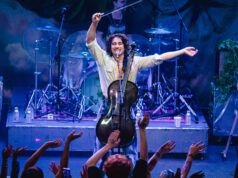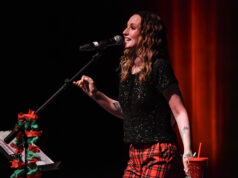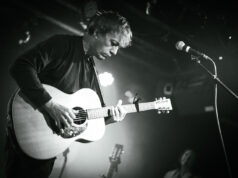“I just love music. All of it – listening to it, playing. I mean, all of it. Everything about it, really. There’s really nothing about it I don’t like.” – Jerry Garcia
During the pandemic shutdown when live music performances could have completely disappeared, musicians, fans, and venues responded in typically creative fashion: on-line live streams, sidewalk concerts, drive-in shows, and a massive Congressional lobbying effort by National Independent Venue Association (NIVA, #saveourstages) spearheaded by Dayna Frank of First Avenue in Minneapolis. And save our stages they did as the Save Our Stages Act was approved in 2020 to the tune of $15 billion, setting aside funds for independent venues to weather the economic Covid storm.
Some of us, however, had already discovered a way to enjoy live music that wasn’t so broadly publicized: bootlegs. I don’t mean the less than pristine records one used to find buried in the stacks of Mom-and-Pop music shops recorded on a cassette player by a guy standing in the back of an arena surrounded by screaming fans that, when placed on a turntable, the snaps, crackles, and pops drowned out the music itself. Rather, unauthorized concert taping has documented and given music fans wonderful opportunities to relive the thrill of live music and as technology improved over the years and tapers became savvier, concert recordings (or “ROIOs”-recordings of indeterminate origin) grew in popularity and quality.
Today, a dedicated and expansive tape-trading community has given way to the internet’s reach. Torrent sites host peer-to-peer sharing of live recordings made by fans using either sophisticated “rigs” (digital recording devices) that include microphones designed specifically for the task, or plugging directly into the soundboard, has resulted in recordings of spectacular fidelity reproducing the “live feel” of a concert.
However, there is one important distinction between bootleg recordings and those shared on torrent sites: money, and the exchange thereof. “Bootleg” is a term commonly applied to live recordings sold for profit with no compensation for the artist. In contrast, recordings shared on torrent sites are typically labeled “made by fans for fans,” strictly prohibit uploading officially released material, and have the implicit (or explicit) approval of the artist.
“Well, my feelings are, the music is for the people…I mean after it leaves our instruments it’s of no value to us, ya know what I mean…so, it might as well be taped, my feeling is that…and if people enjoy taping it and enjoy having the tapes to listen to, that’s real great.” – Jerry Garcia
One might assume the history of live concert recording begins with the Grateful Dead in the 1960s, though according to Clinton Heylin in his 1994 book, “Bootleg: The Secret History of the Other Recording Industry,” unauthorized recordings of live music have existed since the dawn of recording technology. As early as 1901, audiences were recording live opera performances in 1901 using crude wax cylinder devices.
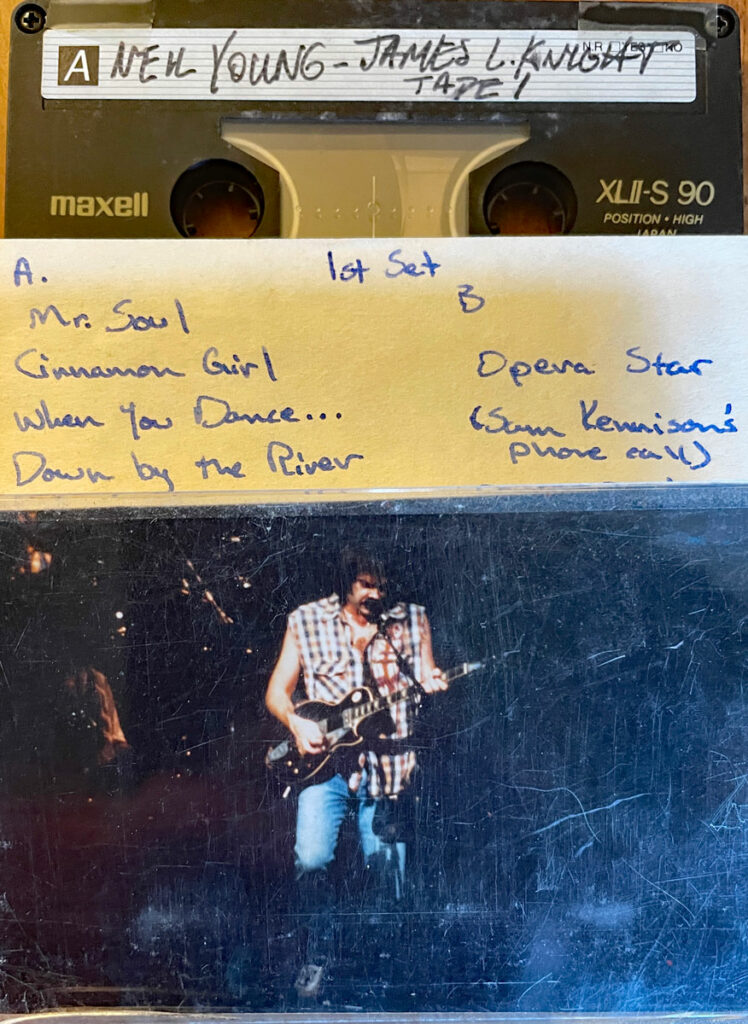
In the pre-internet days, tapes were traded by mail through a “vine” system. Copied and passed among friends and acquaintances using blank cassette tapes (and later, CD-Rs), concert tapes would spread, chain-letter like, among dozens (or hundreds) more participants on the vine. Over time, these communities grew, whether for a particular artist or musical genre, becoming a semi-organized movement…and birthing an entire sub-culture.
“The shows are never the same, ever. When we’re done with it, they can have it.” – Jerry Garcia
In the early days, “stealth” tapers snuck their recorders and microphones into venues. In time, though, Grateful Dead fans redefined the live music experience. Most of us have seen footage (or experienced it ourselves!) of Deadheads dancing and twirling in ecstasy at concerts or simply mesmerized by the band’s sheer musicianship. When taped shows began circulating among fans, the experience could be shared with those who weren’t at a particular show and became a driving factor in expanding the Dead’s fan base. Moreover, tapers realized that they were acting with the band’s tacit approval, taking the practice to new and previously unimagined levels of expertise and sonic quality.
Then, on Oct. 27, 1984, the band made it official, opening a dedicated taper’s section at the Berkeley Community Theater show. That fateful (and inevitable) decision gave tapers a stamp of approval, furthering the Grateful Dead’s intention to create a culture of inclusion, magic, and joy. Their music, with the help of the tapers, was not just entertainment but became a significant and meaningful part of peoples’ lives, growing the Grateful Dead’s legacy.
Taping wasn’t limited to the Grateful Dead, of course. Led Zeppelin, CSNY, Yes, the Rolling Stones, Pink Floyd and countless non-supergroups had their dedicated tapers, with thousands of tapes traded through the mail over the years. The rules stayed the same, though: no money exchanged hands. As a result, a formidable live music history grew that documented the legacy of those groups.
“If you’re able to enjoy something, to devote your life to it or a reasonable amount of time and energy, it will work out for you.” – Jerry Garcia
On August 9, 1995, two events occurred with implications that changed the world. On that day, the Grateful Dead, as we knew it, ended with Jery Garcia’s death. Concurrently, the initial public offering (IPO) by Netscape, a little-known startup that designed software to power the Internet, portended changes to popular culture that, at the time, few of us understood or imagined. Now with the benefit of nearly 30 years hindsight, those two seemingly unrelated events are inextricably linked.
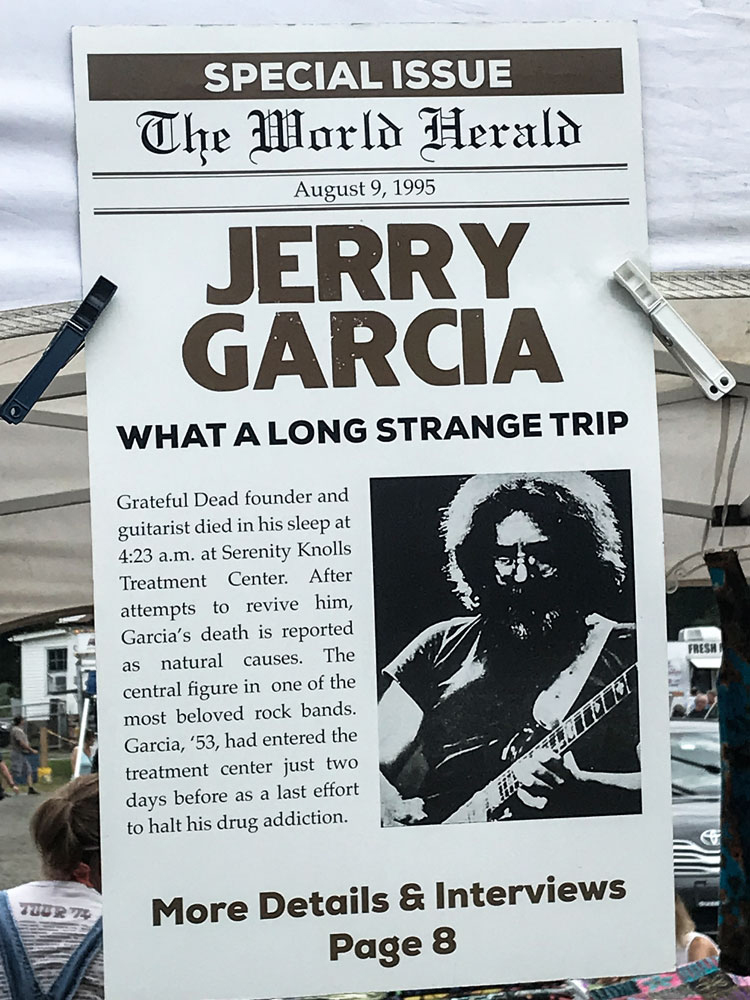
Jerry’s death was the end for the Grateful Dead, but according to Levi Asher writing in Literary Kicks, August 9th marked the start of the “Internet Age.” Indeed, Deadheads’ overwhelming grief resulted in thousands of spontaneous meetups and memorials that same evening, gatherings that were publicized on early internet sites like rec.music.gdead, the popular Grateful Dead USENET newsgroup. Beyond the Dead community, Jerry’s passing became a significant “viral” event on CompuServe, AOL, Prodigy, and other emerging online communities around the world. Attempting to keep up, the Dead’s website (hosted by a Carnegie-Mellon University student) was updating every few minutes.
“We’re like licorice. Not everybody likes licorice, but the people who like licorice really like licorice.” – Jerry Garcia
I had been collecting audience tapes of Grateful Dead performances since the 1980s, but my “stash” was fairly small. Once Jerry passed my interest in the Dead cooled (I also started having kids so priorities changed), but as years passed and the internet age really took off, I began learning about downloading music. When Napster came along in 1999 with the ensuing controversy over internet piracy of officially produced content, I was wary. I firmly believe artists deserve fair compensation for their work, no matter how that work is distributed. I couldn’t bring myself to download the wide selection of movies and music that was available through Napster, not to mention that dial-up modems were terribly inefficient.
By the mid aughts, acquiring music through the internet became more feasible due to the widespread installation of fiber-optic cables and faster, more efficient download speeds. Apple, Amazon, and Google all developed platforms for customers’ easy access to music downloads. Today, though, even downloading music has become a thing of the past as streaming is now the primary way people in the U.S. listen to music. A 2021 report notes that 41% of Americans now enjoy music through streaming services, more than any other format.
So, what does that all mean for live music? As the Covid-19 years fade from memory and musicians tour with pre-pandemic gusto, tapers are again out en force, recording and preserving that spontaneous live sound. That egalitarian Dead tape-trading culture that began all those years ago still thrives today. As trading live music recordings has moved into the Internet Age, torrent sites such as EZTorrent, The Traders Den, and bt.etree adhere to a strict set of rules and a community enforced ethic; primarily, that music is shared and that no money changes hands (joining a torrent site is free but requires registration). Officially released music is prohibited and immediately removed. Torrent sites all have NAB (not allowed bands) and NAV (not allowed venues) lists where artists have indicated that their recordings may not be uploaded and/or shared. Additionally, only lossless flac music files may be shared (no mp3s), thus ensuring that high quality sound is maintained and circulated.
Watch Neil Young find and take a bootleg recording of himself via YouTube.
Many musicians nonetheless embrace recording and sharing of their live performances. Neil Young, whose performances have been recorded for decades and who originally disapproved of those recordings, has now officially released several fan-recorded performances on his website, Neil Young Archives (NYA). Back in 2012, Young said, “I look at [the] internet as the new radio. Radio [is] gone. Piracy is the new radio; it’s how music gets around.” Rather than hearing a new tune on your favorite AOR FM station, streaming services like Spotify and Tidal suggest new music based on your listening habits and history. Similarly, while exploring torrent sites users learn about new bands and music. As a result, streaming and/or downloading live music increases the likelihood that fans will purchase official recordings and attend artists’ concerts.
“What a long strange trip it’s been” – Jerry Garcia
Today, the Live Music Archive (LMA) hosts a mindboggling array of live music from musicians and bands both obscure and renowned. More than simply a depository of recorded performances, the LMA stands as a virtual museum, documenting the history, influence, and existence of thousands of bands across the musical spectrum.
Of course, bands have traditionally released official live recordings, often with cleaned up sound, overdubs, or other studio enhancements. Platforms such as nugs.net and Wolfgang’s Vault offer subscription-based streaming services for live recordings. But nothing compares to the culture changing influence of the Grateful Dead’s benign promotion of recording and trading their concerts that continues to give life to the spontaneity of those sublime live moments (and even onstage disasters).
Without today’s tapers (an enduring but nonetheless anachronistic term given today’s digital recording devices), music fans could not appreciate Neil Young’s 1977 performance of “Sweet Home Alabama” in tribute to Skynyrd shortly after its tragic plane crash, Yes’s unique performance of “And You And I” in 2004 at Madison Square Garden, or Prince’s first performance of “Purple Rain” at First Avenue. And in light of so many of our favorite artists passing in recent years, their live musical bodies of work are still with us, right up to their final performances.
Watch Prince’s debut performance of “Purple Rain” at First Avenue via YouTube.
One could argue that, judging from the proliferation of smart phones, screens ablaze, at most concerts these days, everyone is a taper. Those video recordings popping up on multiple social media platforms give us a near real-time look at many thrilling moments: Taylor Swift performing flawlessly in the pouring rain, Boygenius’s joyful onstage shenanigans, or the Cure’s Robert Smith being moved by adoring fans.
Mark A. Rodriguez, in his book, “After All is Said and Done: Taping the Grateful Dead 1965-1995,” asserts that, “One goal of this particular band was to change culture, for people to relate to each other in idealistic or ‘utopic’ fashion…a free distribution thing.” One can trace an unbroken chain linking the Dead’s earliest tapers to the cell phone video captures of today. Rather than those notes (and images) floating off into space never to be experienced again, they’ve been preserved for more of us to enjoy, and perhaps add to the musician’s fan (and customer) base. As much as the pandemic years hurt, for many of us, listening through headphones, watching on a cell phone screen, or immersed, dancing and twirling in it, the music never stopped.
“You need music, I don’t know why. It’s probably one of those Joe Campbell questions, why we need ritual. We need magic, and bliss, and power, myth, and celebration and religion in our lives, and music is a good way to encapsulate a lot of it.” – Jerry Garcia

